Originally when I planned this trip in South America I had been determined to walk the Vilcabamba trek after my birthday trip to Manu. Unfortunately all the companies in Cuzco I contacted did not either show any interest in my request or did not even reply. It is a great shame that all the tourists and trekking companies are so fixated by treks to Machu Picchu that they seem uninterested in anything else, especially when there are so many great alternatives in the area. Consequently after several fraught months trying to organise this, in Lima I decided that Dad and I should use this time to visit the Galapagos. This was somewhere I had always dreamed of visiting but had been unable to in 2009 due to a tight budget. Now seemed the obvious occasion.
As it turned out, the accident that cut my knee in Manu would have prevented me from trekking Vilcabamba anyway as the last three days in Cuzco was spent trying to combat its obvious infection with some serious anti biotics plus try and organise a clinic in Lima to dig out the infection, if necessary
. Luckily in the end the drugs worked but even after a week in Ecuador I was still feeling the effects.
We left cold, dark, misty Lima on the 3rd Sept and flew directly to Ecuador’s second city Guayaquil. We checked in to the remarkably clean Jeshua Hotel in the centre of town and spent the first day walking around the re-developed Malacon riverfront area, through the congested and bustling city centre and then old area of town. in the evening I met up with my old friend David Rumbea with whom I worked at Amazoonico in 2009 and whom I had not seen since. It was great seeing him again and we went out for dinner with him, his girlfriend Chaby and my father to a huge Parilla Restaurant.
The next morning we had an early checkin with TAME (which was necessary considering all the extraordinary paperwork that had to be completed) before flying off to the Galagos and the island of Baltra
. The two hour flight was uneventful and I sat next two Scots. We landed on the barren Baltra Is and then had to complete more formalities and paperwork before parting with our $100 entrance fee and then catching a public bus to the port. From there it was a 20m ferry ride to the main island of Santa Cruz and then a 50 min bus ride from north to south and the main settlement of the Galapagos, Puerto Ayora. Santa Cruz in the north was barren and lava dominated with strange tree-like Cacti and some green shrubs. The centre of the island was mountainous, covered in thick mist and called the “Highlands”. Here it was cold and damp and as we descended to the southern coast we were surrounded by fields, agriculture and several settlements (not what I had expected). Puerto Ayora was quite literally a dump. It looked like a town constructed in a hurry with little thought paid to aesthetics, architecture and (most worryingly) the environment. “This is depressing” muttered Dad.
As we wound our way through the drizzly half constructed streets to the harbour, Dad added that it reminded him of a Shanty Town in Africa. It was difficult to disagree. The streets were lined with tour agencies and half baked hostels. The front near the fish market was somewhat better, but we were glad to arrive at the harbour. Here we were met by a beaming Gundi our friendly host
. Accommodation in the Galapagos is usually expensive and below standard according to what I had read and so I had researched Trip Advisor and booked both of us into Gundi’s B&B called Jean’s House. This was to turn out to be a masterstroke. Jean’s House was located on the bay opposite Puerto Ayora and therefore quiet, relaxed and comfortable. Accessible only by a passenger ferry across the bay, it escaped the vagaries of the capital town like the rude taxi drivers, incessant late night town loud pop concerts, rubbish and the Shanty Town experience. Jean’s House was surrounded by small pathways (no cars) and a few other places to stay, lava, birds and cacti. Jean (the previous owner) had built the house by hand with lava stones and each bedroom was comfortable, cosy and large. Gundi herself was completely engaging and extremely welcoming. She was born on the island, was an ex-guide and knew the place like the back of her hand. Her hospitality was great, breakfasts lovely and she got on well with Dad. A quick unpack and then lunch at the ferry area was marvellous watching the large Pelicans feed plus the Finches and the Gulls. All who appeared oblivious to our presence.
We decided to return to Puerto Ayora in the afternoon and on Gundi’s advice (as the weather was overcast and drizzly) decided to walk to the fish market and then to the Darwin Centre. Gundi’s advice was again spot on as the fish market was a hive of activity (animal activity)
. By many standards this was a small fish market with the fishing boats moored alongside the quay and four fisherman gutting their catches under a large permanent market roof. On one side was a local restaurant serving fresh fried fish, rice and friend banana. On the other side was the gutting. Here amongst the fisherman were a good ten Pelicans, large and very hungry snapping their large mouths at the fisherman plus one huge sea lion sitting amongst the plastic buckets. On the roof gathered large Frigate birds whilst in the sea swam more Pelicans, Sea lions whilst Herons and Marine Iguanas watched from the shore. It was hardly a view that the Galapagos tourist board promoted but everything was here and wandering amongst the fisherman and the handful of snap happy tourists.
The weather was dull and the rain just a fine mist so decent pictures were not possible, but just to watch was a treat. Ever so often, one sea lion would quietly clamber on a fisherman’s boat and get into a sack of tuna heads or something similar without the owner seeing
. Squabbling Frigate birds circled overhead trying to steal any scraps from the gapping mouths of the watching immense Pelicans. It was fascinating.
After a while we moved on along the sea front tourist shops until we reached the mangroves and the road to the Darwin Centre. This road turned out to be equally great for birds as this was (we found out) one of the best places to see the famous Darwin Finches. For here, the Finches and the Warbler Canaries gather, impervious to human presence and photography is therefore much easier. Whilst the weather was still poor, being so close to these birds was exciting and very unusual. There are 14 Finches on the island (one endemic to one southerly island) and each has evolved or adapted to the environment in unique and stunning ways. The most famous are the Cactus Finch which lives only in one type of Cactus and uses a stick to pick out grubs from inside these plants and the Woodpecker Finch which also uses a stick as a tool
. We tried over the next ten days to see as many of these Finches as possible and it was quickly obvious as to why Darwin was drawn to these creatures.
The Darwin Foundation is not supported by the national Park entrance fee and relies totally on membership and donations to fund its environmental work. It support of the Galapagos Tortoises is world famous and the breeding program can be visited here on Santa Cruz. We walked all around the breeding cages hosing the juvenile tortoises, each kept separate (each island has its own species) and marked accordingly. We also saw the program for breeding Iguanas and some of the giant older tortoises and the pen where “Lonesome George” had lived before his death in 2012.
There was an exhibition detailing the foundations work and some interesting info on the Finches plus all the research buildings
. The souvenir shop had been closed down after the locals in Puerto Ayora complained that it was “unfair competition” to their own businesses. Another illustration of the inconsistencies and contradictions we experienced in Santa Cruz. Without this type of revenue, the Foundation is in jeopardy and these actions of the majority of the traders in Puerto Ayora are seemingly consistent with their utter contempt for the environment and their lust for money.
That evening we had a reasonable meal in a restaurant for about $25 per head excluding alcohol. This appeared to be the norm here (except in the remote back streets where meals could be obtained for $5 catering to the locals - if you could spot the vendors) and returned to the tranquility of Jean’s Home. On Gundi’s recommendation we decided to spend four days on Santa Cruz and four days on the largest island of the Galapagos, Isabella. This would give us a good overview of these islands. We booked one trip to Seymour Is to see the birds there (as I was unable to get to the two islands I particularly wanted to visit) and decided to book additional trips from Isabella. The trip to Seymour was 160$ pp for a seven hour trip, hardly value.
The alternative to this type of island hopping is to go on a cruise. Buying a cruise ticket outside Ecuador can be as much as $5000 for a seven day cruise. In Guayaquil the same cruise was $2000, and here in Puerto Ayora it was $1400. However (and I was told by many people both here and on the mainland) that these 7 day cruises did not visit Genevieve and Espaniola Islands the two remote islands I wanted most to see. Only a 15 day cruise would do that a twice the price (they said), so we decided to island hop. As with many things in the Galapagos, this information turned out to be false. After a few days, I met tourists who had been to these two on seven day cruises. Actually the seas were so rough, I doubt we would have enjoyed the experience anyway, but this constant feed of incorrect information was infuriating.
Having now planned our stay and bought our ferry ticket to Isabella we now decided to visit the Highlands. For this we excursion we could have gone on a tour which would cost in excess of $150, but Gundi suggested an alternative trip to see the same animal highlights but by taxi. Giovanni, who we met in the street just happened to be an honest taxi driver, the first one (and only one) we had met in Puerto Ayora and he proved excellent. First stop was Manzanilla Farm, a former cattle farm now turned into a coffee ranch and home to the Galapagos Santa Cruz Tortoise species. These giant animals roamed the grounds unhindered and the first one we encountered was sauntering down the entrance road. Standing on all fours he was very imposing and his deep brown grey colouring exuded health. Certainly a far cry for the old centurions we had seen at the Darwin centre. A quick walk through the estate revealed many other large beasts moving slowly through the long grass and some moving surprisingly quickly towards the large red algae covered lake in the middle of the property. The whole farm was well maintained and the misty forest overgrown and enchanting. The tortoises were just fabulous and we spent quite a while walking up to them and around them. Of course they stuck their heads under their shells when they felt you were too close and emitted a strange growl. All excellent.
Next Giovanni took through another settlement to the summit of a large extinct volcano. Here the lichen was spectacular, as were the cacti and trees surrounding the summit. Unfortunately the rain and mist came over again and we had to beat a retreat down to a cafe by a lagoon. Here we spotted some Crags and Ducks but nothing really exciting. The rain continued to fall.
From here we headed over to the east coast and a famous beach in the main national park. The walk down to the park was interesting through sandy vegetation and plenty of cacti, with their unusual tree-like trunks. Here the Finches and the Galapagos Mockingbirds were everywhere. On the beach, many of the citizens of Puerto Ayora were enjoying their Sunday. As the water was cold, hardly anyone swimming, but volleyball, picnics etc were all being enjoyed. This all seemed a bit strange as this was one of the few national park areas we were allowed to visit. Here amongst the beach going ons were tourists trying to watch and photograph wildlife whilst there were other people sunbathing and eating picnics. Well I found this somewhat surreal and will not forget the marine iguanas and the crabs who were being followed over the lava formations by some tourists carefully stepping over sunbathing locals.
In the end the weather deteriorated here as well so we made our way back to Puerto Ayora, where we had an early dinner before catching the ferry back to Jean’s house and leaving the harbour front disco blaring out its music. With our ferry to Isabella departing the following day we said goodbye to Gundi (who was closing her B&B for two weeks whilst she visited Quito) so we would not see her on our return.
The next morning it was an early start and when we reached the main harbour we were ferried out to a sort of tourist launch for the 160 min ride to Isabella island. This turned out to be very rough, with some being sick on the boat and the vessel crashing up and down over huge waves. We were all thrown around the small boat.
On Isabella we met two of Gundi’s friends a retired couple called Gundaria and Sirco, with whom we were staying. I was immediately more impressed with Isabella as the port. It was surrounded by lava formations called the Tears and impenetrable mangroves, and once inside the bay area Pelicans, Boobys, Penguins, sea Lions and Frigate birds were all clearly visible.
The B&B was set back off the main drag (a dirt road with a few hotels, restaurants, tour companies and a Plaza del Arms). We had been warned not to expect any ATMs so had taken plenty of money. Dad still felt aggrieved when he could not buy four bottles of wine at the local store with his visa card - and berated the owner. Not a good start. Unlike Puerto Ayora this place was much smaller and had been only in existence since 2006, supporting just a few thousand people (at most). Water and electricity would not be easy, but our B&B was comfortable clean and had wifi - so I was content.
Again everything was expensive (par for the course here and we had been warned) but still paying $30 a head for an average dinner with no alcohol was not fun. It was also surprising to find out that despite tours being available to the southern part of this island (the largest in the archipelago) there was nothing available north of the main volcano, unless you went on a pre-booked cruise. The tours however were cheaper than on Santa Cruz and we immediately organised two with Sirco’s help. That afternoon we went for a walk, finding information again somewhat contradictory and incorrect. The National Park HQ advised me that Frigate birds do not wash in fresh water - later in the afternoon I met a tourist who had photographed this behaviour. We eventually retreated to a hotel for a coffee when the heavens opened again and were charged $10 for two coffees (Santa Cruz produces coffee).
The first tour was to the main picturesque Volcano of the island. For this excursion we were joined by two English students, a Texan lady called Elizabeth and two older tourists from Zurich. I had enquired about whether Dad would find this difficult and we were told no, he would be fine, by many local people. The Swiss were told the same, however the flat mountain top trek turned into a climb up the volcano from the bus stop and several other groups had their elderly tourists on horse back. Dad coped admirably well.
We arrived at the car park (half way up the volcano) in a converted truck before eight am and started the climb in the mist. The trees and the scrubs either side were covered in wet rain and mist and the visibility was restricted but after about two hours we reached the crater. The crater was a huge 10km across, shrouded in mist with a rainbow above. This was spectacular and we now skirted the crater on our way to the highest peak. As we continued to walk around, the mist dissipated and the sun and then the blue sky emerged revealing the entire crater in all its glory. At the top we started descending on the northern side with the whole island clearly visible in front. It was spectacular and the other four island volcanos were now clearly visible. It was about now that we left Dad and the two Swiss at a rest area and continued on to see and climb a small new active volcano which had emerged on the slopes of the older large one. The lush vegetation now changed into barren brown lava with lava tubes and the occasional green plant or cactus. Eventually we came to the new volcano and climbed a short path to the summit and marvelled at the view. The colours of the lava and rocks were also spectacular and looked great against the deep blue sky.
We retraced our steps back to the rest station and met Dad, before climbing back to the main crater and here on the southern slopes the clouds from the south were now cascading over the enormous crater rim like a cloud waterfall. Wow - it was so beautiful and as we started retracing our steps, the clouds kept falling over the crater. It was then that Dad started feeling the trek and the distance (in total I was later to find out it was 16 kms not eight).
Eventually we made it but the rest had to wait quite a while in the truck at the end for us to catch up. Dad and I did though manage to catch a glimpse of the bright red Vermillion Fly Catcher on the descent, which was a bird I was very keen to see and photograph. It shone like a traffic light out of the misty cloud forest and allowed us to take a welcome break on the downhill trek. All the rest missed this bird.
Back in town Dad was exhausted and managed an afternoon sleep.
Finches, Volcanos, Tortoises & Darwin
Wednesday, September 03, 2014
 Puerto Ayora, Galapagos Islands, Ecuador
Puerto Ayora, Galapagos Islands, Ecuador
Other Entries
-
56Auto Parts, Nata Birds, Wind and Elephants
Jun 0689 days prior Francistown, Botswanaphoto_camera3videocam 0comment 0
Francistown, Botswanaphoto_camera3videocam 0comment 0 -
57Water, Rivers, Camping, Customs and Getting Wet
Jun 1085 days prior Victoria Falls, Zimbabwephoto_camera5videocam 0comment 0
Victoria Falls, Zimbabwephoto_camera5videocam 0comment 0 -
58Sand, Hides, Elephants, Birding, getting Stuck
Jun 1580 days prior Kasane, Botswanaphoto_camera7videocam 0comment 0
Kasane, Botswanaphoto_camera7videocam 0comment 0 -
59Safari, Glamping, Sand & Wildlife
Jun 2075 days prior Savuti National Park, Botswanaphoto_camera4videocam 0comment 0
Savuti National Park, Botswanaphoto_camera4videocam 0comment 0 -
60Charging Hippos, Delta, Glamping & Roaring Lions
Jun 2570 days prior Maun, Botswanaphoto_camera4videocam 0comment 0
Maun, Botswanaphoto_camera4videocam 0comment 0 -
61Creationists, Rare Birds, Rock Art & Meteorites
Jun 2867 days prior Rundu, Namibiaphoto_camera5videocam 0comment 0
Rundu, Namibiaphoto_camera5videocam 0comment 0 -
62Bushmen, Hunts, the San, Gravel Roads, Car Trouble
Jul 0461 days prior Tsumkwe, Namibiaphoto_camera8videocam 0comment 0
Tsumkwe, Namibiaphoto_camera8videocam 0comment 0 -
63Animals, waterholes, dust, more dust
Jul 1055 days prior Etosha National Park, Namibiaphoto_camera4videocam 0comment 0
Etosha National Park, Namibiaphoto_camera4videocam 0comment 0 -
64Fog, concrete, sand, cold, wind plus illness
Jul 1748 days prior Walvis Bay, Namibiaphoto_camera5videocam 0comment 0
Walvis Bay, Namibiaphoto_camera5videocam 0comment 0 -
65Red Dunes, Mud Flats, Quiver Trees plus Sand
Jul 2342 days prior Keetmanshoop, Namibiaphoto_camera5videocam 0comment 0
Keetmanshoop, Namibiaphoto_camera5videocam 0comment 0 -
66Breaching Sharks, Rooibos and Rain
Aug 0133 days prior Vanrhynsdorp, South Africaphoto_camera4videocam 0comment 0
Vanrhynsdorp, South Africaphoto_camera4videocam 0comment 0 -
67Robbery, Raw Fish, Cloudy and Drizzle
Aug 0529 days prior Lima, Peruphoto_camera4videocam 0comment 0
Lima, Peruphoto_camera4videocam 0comment 0 -
68Camille Schaeffer and Family RIP
Aug 1123 days prior Lima, Peruphoto_camera1videocam 0comment 0
Lima, Peruphoto_camera1videocam 0comment 0 -
69Rest, Lines, Vines and Sand
Aug 1222 days prior Ica, Peruphoto_camera4videocam 0comment 0
Ica, Peruphoto_camera4videocam 0comment 0 -
70Incas, Ruins, Trains, Parasites, Veganism
Aug 1915 days prior Cusco, Peruphoto_camera4videocam 0comment 2
Cusco, Peruphoto_camera4videocam 0comment 2 -
71Cloud Forest, Ruins, Birds, Animals, 50th
Aug 2410 days prior Manu National Park, Peruphoto_camera5videocam 0comment 0
Manu National Park, Peruphoto_camera5videocam 0comment 0 -
7250th part 2, Otters, Macaws, Jaguar, Tiramisu
Aug 304 days prior Puerto Maldonado, Peruphoto_camera6videocam 0comment 0
Puerto Maldonado, Peruphoto_camera6videocam 0comment 0 -
73Finches, Volcanos, Tortoises & Darwin
Sep 03 Puerto Ayora, Ecuadorphoto_camera7videocam 0comment 0
Puerto Ayora, Ecuadorphoto_camera7videocam 0comment 0 -
74Sharks, Penguins, Sea Lions and Boobys
Sep 107 days later Puerto Villamil, Ecuadorphoto_camera6videocam 0comment 0
Puerto Villamil, Ecuadorphoto_camera6videocam 0comment 0 -
75Frigates, Poor Service, Iguanas, Diving Pelicans
Sep 1310 days later Guayaquil, Ecuadorphoto_camera5videocam 0comment 0
Guayaquil, Ecuadorphoto_camera5videocam 0comment 0 -
76Car Crash, Chachas, Mules and Blood
Sep 1815 days later Chachapoyas, Peruphoto_camera4videocam 0comment 0
Chachapoyas, Peruphoto_camera4videocam 0comment 0 -
77Kuelap, Mummies, Ruins, Hummingbirds
Sep 2522 days later Leymebamba, Peruphoto_camera6videocam 0comment 0
Leymebamba, Peruphoto_camera6videocam 0comment 0 -
78Sarcophagi, Fountains of Blood, Horseback
Sep 2825 days later Cuispes, Peruphoto_camera3videocam 0comment 0
Cuispes, Peruphoto_camera3videocam 0comment 0 -
79Waterfalls, Rain and Loud Peruvian Pop Music
Sep 2926 days later Pedro Ruiz, Peruphoto_camera4videocam 0comment 0
Pedro Ruiz, Peruphoto_camera4videocam 0comment 0 -
80Hummingbirds, Orchids, Coffee and Stomach Bugs
Oct 0229 days later Moyobamba, Peruphoto_camera5videocam 0comment 0
Moyobamba, Peruphoto_camera5videocam 0comment 0 -
81Battlefields, Zulus, 1879, Leaving South Africa
Oct 1845 days later Dundee, South Africaphoto_camera4videocam 0comment 0
Dundee, South Africaphoto_camera4videocam 0comment 0 -
82Mr India, X Factor Naga style, Exotic Food
Nov 0664 days later Mokokchung, Indiaphoto_camera5videocam 0comment 0
Mokokchung, Indiaphoto_camera5videocam 0comment 0 -
83Burma, Headhunters, Opium & Dust
Nov 0967 days later Launghe, Myanmarphoto_camera4videocam 0comment 0
Launghe, Myanmarphoto_camera4videocam 0comment 0 -
84History, bad guesthouses, hills, Wakching
Nov 1472 days later Mon, Indiaphoto_camera4videocam 0comment 0
Mon, Indiaphoto_camera4videocam 0comment 0 -
85Skulls, Fertility, Opium, Anghs, Warriors
Nov 1775 days later Shengnya, Indiaphoto_camera5videocam 0comment 0
Shengnya, Indiaphoto_camera5videocam 0comment 0 -
86Elders, Changs, Culture, Families and Skulls
Nov 2280 days later Tuensang, Indiaphoto_camera5videocam 0comment 0
Tuensang, Indiaphoto_camera5videocam 0comment 0 -
87Sangai Festival - Kang, Hockey/Wrestling, Polo etc
Nov 2886 days later Imphal, Indiaphoto_camera5videocam 0comment 0
Imphal, Indiaphoto_camera5videocam 0comment 0 -
88Hornbill Festival, Loin Looms & Naga Culture
Dec 1098 days later Kohima, Indiaphoto_camera10videocam 0comment 0
Kohima, Indiaphoto_camera10videocam 0comment 0 -
89Birds, Rubbish, Grasslands, Rubble, Tribes etc
Dec 14102 days later Nakhatrana , Indiaphoto_camera5videocam 0comment 0
Nakhatrana , Indiaphoto_camera5videocam 0comment 0 -
90Embroidery, Rogan, Block Printing, Tribes
Dec 17105 days later Bhuj, Indiaphoto_camera5videocam 0comment 0
Bhuj, Indiaphoto_camera5videocam 0comment 0 -
91Lions, Nitin, Bird Spotting, Sleeper Bus Part 1
Dec 21109 days later Gir, Indiaphoto_camera6videocam 0comment 0
Gir, Indiaphoto_camera6videocam 0comment 0

 Puerto Ayora, Galapagos Islands, Ecuador
Puerto Ayora, Galapagos Islands, Ecuador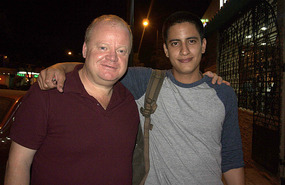
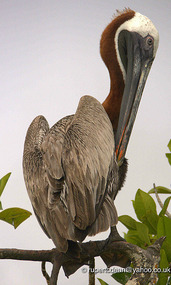
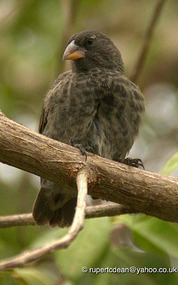
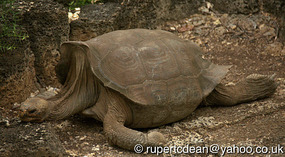
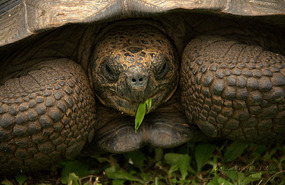
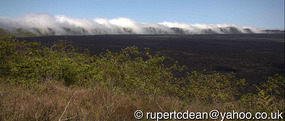
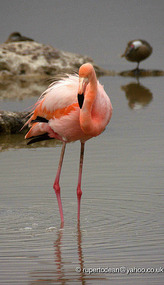








2025-05-22